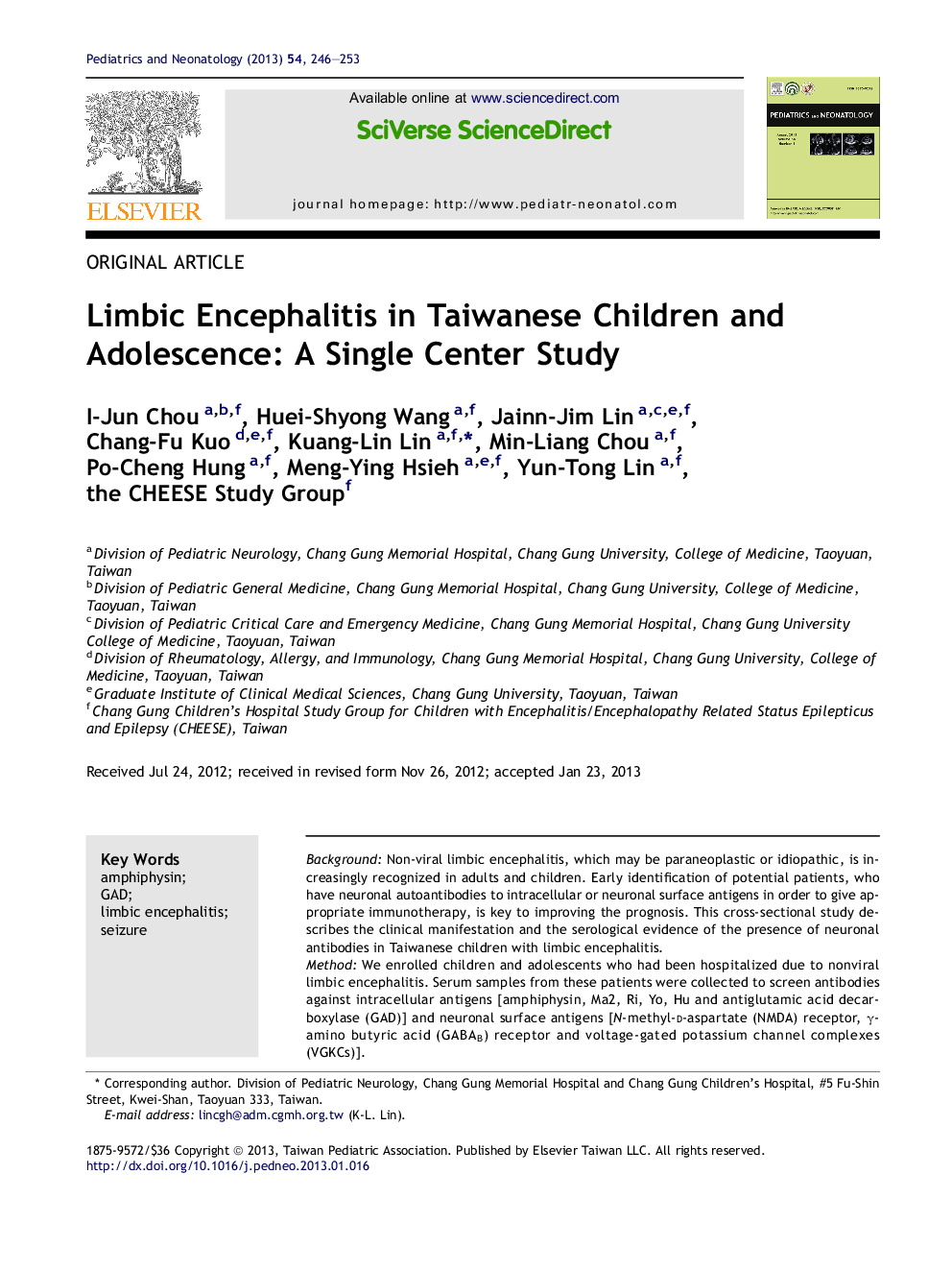| Article ID | Journal | Published Year | Pages | File Type |
|---|---|---|---|---|
| 4175135 | Pediatrics & Neonatology | 2013 | 8 Pages |
BackgroundNon-viral limbic encephalitis, which may be paraneoplastic or idiopathic, is increasingly recognized in adults and children. Early identification of potential patients, who have neuronal autoantibodies to intracellular or neuronal surface antigens in order to give appropriate immunotherapy, is key to improving the prognosis. This cross-sectional study describes the clinical manifestation and the serological evidence of the presence of neuronal antibodies in Taiwanese children with limbic encephalitis.MethodWe enrolled children and adolescents who had been hospitalized due to nonviral limbic encephalitis. Serum samples from these patients were collected to screen antibodies against intracellular antigens [amphiphysin, Ma2, Ri, Yo, Hu and antiglutamic acid decarboxylase (GAD)] and neuronal surface antigens [N-methyl-d-aspartate (NMDA) receptor, γ-amino butyric acid (GABAB) receptor and voltage-gated potassium channel complexes (VGKCs)].ResultsAll of the 10 enrolled patients had acute onset of fever and rapid clinical deterioration. They had persistent neuropsychiatric symptoms and 90% developed refractory epilepsy, despite six patients having been treated with methylprednisolone pulse therapy or intravenous immunoglobulin (IVIG) at the acute stage. In the laboratory findings, half of the cases were positive for antibodies with regards to intracellular antigens (amphiphysin or GAD). The general outcomes, assessed by Glasgow Outcome Scale, were similar between patients with and those without the antibodies (Mann-Whitney U test, p = 0.43). One patient, who was positive for antibodies to amphiphysin 10 years after disease onset, still had a significant response to oral prednisolone therapy. At the end of the follow-up period, no cancer or insulin-dependent diabetes mellitus was detected in any of the patients.ConclusionThis study provides evidence for a potential association between antibodies and limbic encephalitis. The presence of antibodies, especially antibodies to GAD, may serve as an indicator for immunotherapy.
